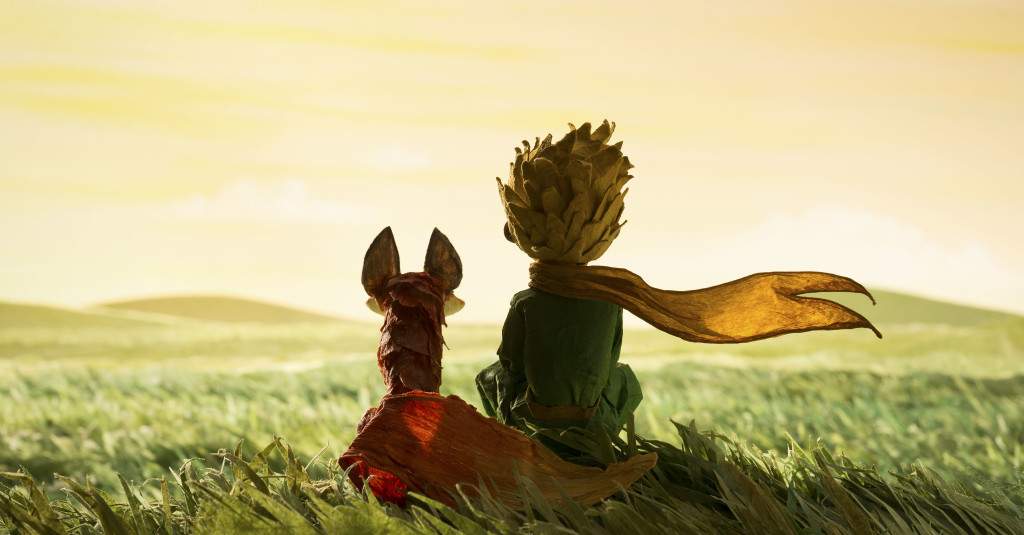“The Little Prince” is a movie I’ve been waiting to see since it first premiered at the 68th Cannes Film Festival.
As a pretty big fan of Antoine de Saint-Exupery’s 1943 classic, and not so much a fan of the 1974 film adaptation with Gene Wilder — though let’s always be clear that I love Gene Wilder — I was excited to see director Mark Osborne’s side-by-side-story approach to the beloved material.
Like every other American audience member interested in the project, I thought my chance to see the film would come earlier this year with its scheduled March 18 theatrical run. But in a bizarre, and still unexplained move by Paramount, distribution was pulled one week before release, and audiences were left wondering if they’d ever see Osborne’s take on the popular children’s story.
Well, as of Friday, Netflix has given the orphaned project a home and subscribers can now see the beautifully animated adventure. Is this the perfect adaptation fans were hoping for? Probably not. But I wouldn’t call “The Little Prince” a disappointment either.
As always, let’s talk about the highlights:
The premise
There are two stories being told in “The Little Prince,” and the first involves a single mother trying to enroll her daughter at one of the city’s finest schools.
In order to make that dream a reality, not only must the tiny family relocate to the cheapest available house in one of the city’s nicest neighborhoods, but the mother (Rachel McAdams) designs a plan to ensure her daughter’s eventual good-standing at the prestigious institution.
This plan takes a left turn however, when the little girl (Makenzie Foy) begins a friendship with their seemingly crazy neighbor, the aviator (Jeff Bridges), who tells the little girl the second story of the film — that of a space-traveling little boy known only as The Little Prince.
What works
There are so many things to love about 2016’s “The Little Prince.”
Visually, this is a beautiful film brought to life by a pretty fantastic and committed cast. The story of a single mom trying to do what is best for her daughter is easy to connect with, and writers Irena Brignull and Bob Persichetti, didn’t cheapen their narrative by making the mother a throw-away, paper-cutout villain. In fact, on a personal note, the mother became the character I felt the most sympathy for throughout the 108-minute runtime.
When it comes to the spirit of Saint-Exupery’s book, even though I’ll be listing specific grievances in the following section, Osborne and his creative team were able to spotlight many of the core themes and apply them to a contemporary setting. While I wouldn’t say this is a successful adaptation of “The Little Prince,” there’s no question the people behind the camera are fans of Saint-Exupery’s message.
What doesn’t work
Osborne’s 2016 adaptation of “The Little Prince” is strangely one that doesn’t actually need The Little Prince.
Had Osborne cut every vignette involving Saint-Exupery’s original story, the movie about the little girl, the mother and the aviator would’ve progressed relatively unchanged with maybe the exception of the quasi-sequel attached to the third act — which let’s face it, was a questionable addition to begin with.
This becomes especially evident if you’re familiar with Saint-Exupery’s tale, and you realize how the most famous moments from the book are trimmed so the movie can get back to the little girl as quickly as possible.
Seeing as you’re likely to be genuinely invested in the little girl and the mother, I might be bringing up a fan-only issue, but I would’ve loved to see the structure of this story reversed. Had Osborne focused first on the Little Prince and then added the little girl as the supplemental element, I would’ve felt this was a movie more worthy of its source material.
A note for parents
One thing I haven’t touched on yet, but is probably worth a mention, revolves around the relationship between the little girl and the aviator. If I were to guess at Paramount’s reluctance to get fully behind this project, it would land squarely with how the story celebrates the little girl’s decision to disobey her mother and instead spend her days unsupervised at the home of a peculiar, old man.
In the context of the film, the relationship is a sweet and very innocent one. However, it’s also a message that flies in the face of society’s “stranger danger” mantra.
Conclusion
As a story about a mother and daughter trying to figure out this crazy world together, “The Little Prince” is sweet and has plenty of potential to connect with the right audience. Still, despite its beautifully animated flashback references to Saint-Exupery’s story, Osborne’s take comes up short as a worthy adaptation of its source material.
While the spirit of the original is on full display by the time the closing credits roll, this is ultimately a sweet story about the little girl that simply references “The Little Prince,” and not the film version of the beloved classic many fans were hoping for.

Recent Comments